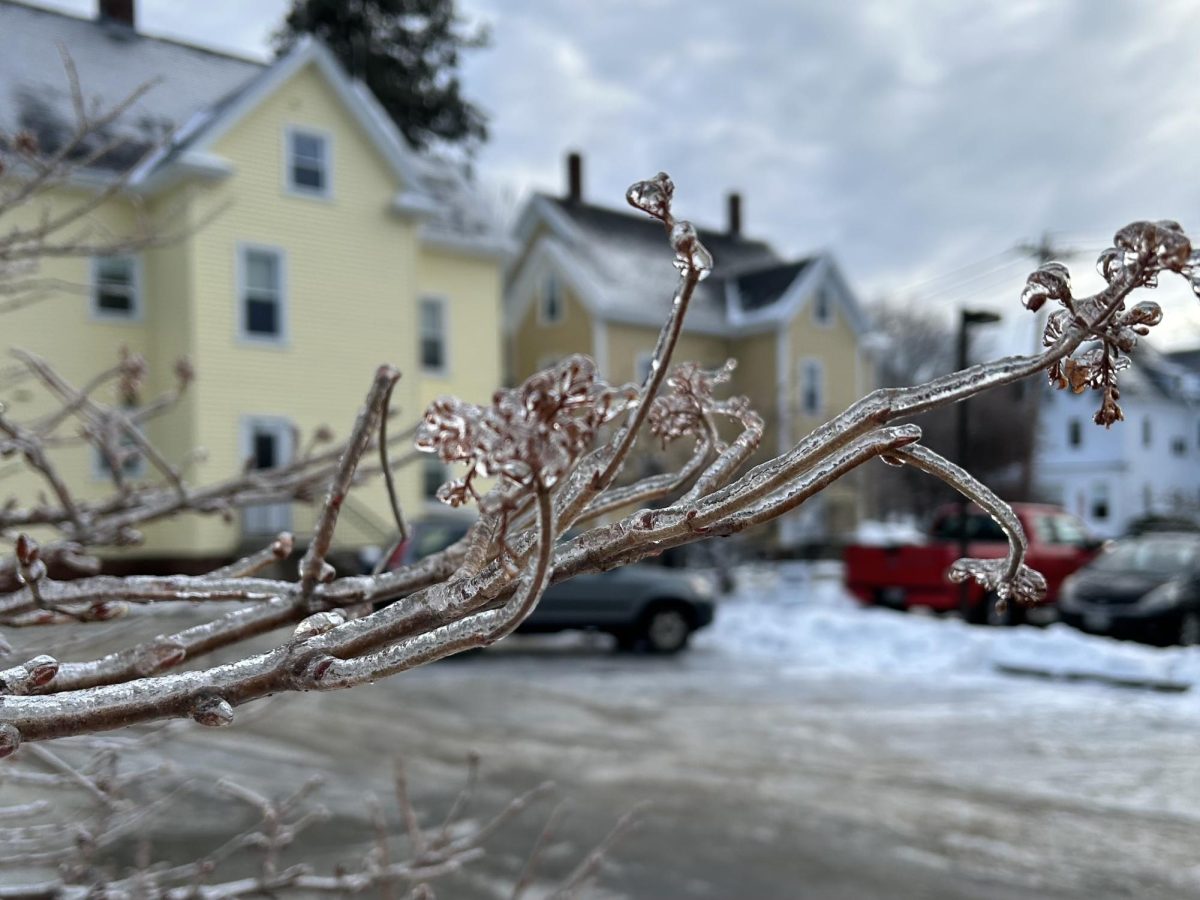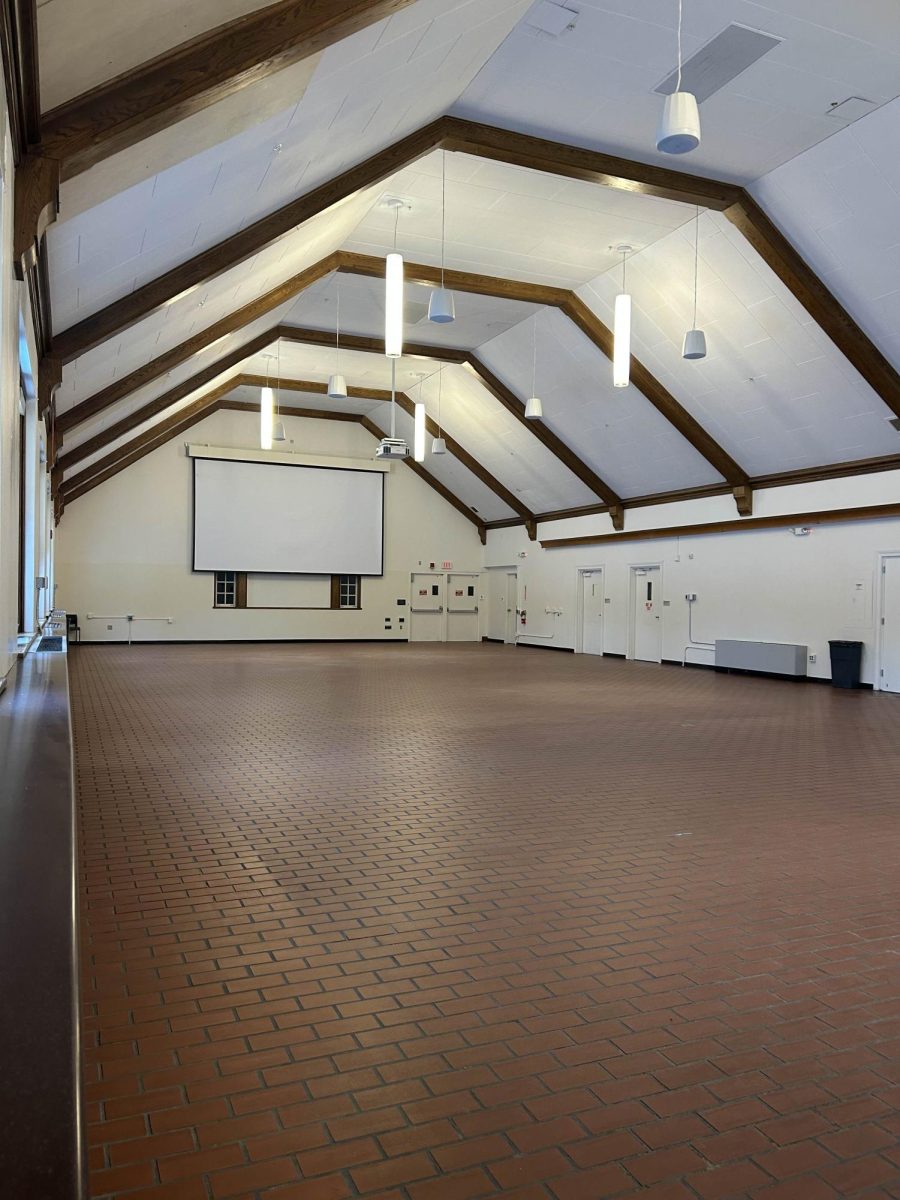On a campus where almost everyone must use pedestrian pathways to get to and from classrooms, residence halls, athletics facilities, and parking lots, ice can be a tricky problem for Facility Services to solve. This school year, for the first time, Facility Services is using only salt to clear ice from pathways, rather than a 50-50 mix of salt and sand, according to Grounds Maintenance Manager, Michael Fox.
“There’s a couple reasons for it. One is the sand is tracked all over the buildings. So that’s an issue for custodial staff cleaning the buildings and it’s hard on the floors in the buildings,” Fox said. “The other issue is cleanup in springtime, cleaning up all of that sand. All of that creates a lot of dust, which is silica dust, it’s very bad to inhale.”
Breathing silica dust can cause short-term irritation and injury and long-term silicosis, which can be fatal. There are strict regulations on how much silica dust workers can inhale, and Bates was approaching a dangerous range.
“One threshold that we reached the first time two years ago was not in the danger zone, where the person operating must wear a respirator full time, but that zone where you need to retest every year,” Fox said. Additionally, students with mobility issues complained that paths were too icy to use.
Fox stated that his priority is “safety first,” so it was time for a change.
This year, grounds maintenance crews have been applying only salt, except in specific circumstances where it can’t do the job, such as the ice storm on the night of Jan. 24 that coated much of the campus in up to half an inch of ice.
“Salt, as it melts the ice, forms a brine that works its way to the bottom of the ice and works from the bottom up, with ice continuing to form on top during the storm,” Fox explained. “In the morning it was clear that we weren’t going to be able to melt all the ice before classes started, so we applied sand to the surface to help with traction.”
Although salt can be very effective at minimizing ice, it can also be a pollutant.
Salt in freshwater bodies, including Bates’ own Puddle and the nearby Androscoggin River, can be harmful in several ways, according to the Environmental Protection Agency. Aquatic life from microscopic to big can suffer from increased salinity, as can human infrastructure and drinking water.
Most importantly, what’s known as freshwater salinization syndrome (FSS) can lead to increased levels of radioactive materials and other minerals in water, which can also foster unhealthy algae blooms and make water harder and more expensive to treat. On Bates’ campus, you can see grass dying off next to paths that have been salted.
These concerns did factor into the decision to choose salt, Fox said.
“We only use it when necessary. We don’t do any pretreatment ahead of storms, we’re only doing it after storms,” Fox said. “We’ve got some pretty fancy applicators so we can make sure that it’s only applied to the areas that it needs to be so that we’re trying to keep it off the lawns.”
Overall, however, Fox expressed that he didn’t think the shift to using salt would create a new pollution problem for Bates.
“When we’re using straight salt, we don’t apply as much as we would with a 50-50 mix of sand salt,” Fox said. “So overall, our salt usage is less so far, but then again, this year just hasn’t been as snowy as years before.”









